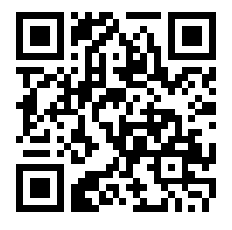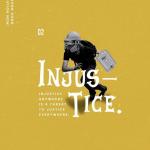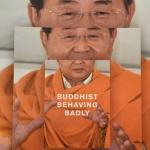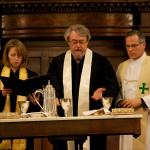As a student of philosophy I was deeply enamored with discussions around semantics, or meaning (or conceptual designation). And as I moved to history, I have grown in awe regarding the shifts that occur in and around meanings, particularly those tied to religiously and politically significant terms.
So I was delighted when I heard the example of the Christmas tree in a recent podcast* used in the discussion of the religious place of things.
Where does the Christmas tree belong in our imagination of religion? Ask 10 people and you’ll get at least 3 different answers. Most, depending on where you are today, know it as a Christian symbol. Some will know of its older pagan roots. And a couple will see it as a secular item found around state-sanctioned Dec 25 holidays around the world. Jewish people can have them. Hindus too. Certainly many atheists who have grown up in a Christian society will happily adopt this ritual of purchasing, decorating, and then throwing away of a perfectly good evergreen tree.

In any case, we can see this progression of what the Christmas tree is in two ways. Diachronically, across time, we can study the evolution of the once-pagan ritual of a winter solstice tree, evolving – again over time – into a Christian tradition – slowly, over time. We’ll see it at times rejected by Christians (anabaptists in early American colonial life, I believe), and readopted. And then we see it becoming a pan-religious or secular symbol of an otherwise quite commercialized and secularized Dec 25 holiday. We can also look at it synchronically, at a single point in time as above: December 2018, who is buying and using these trees and why? Who or which religion has ‘ownership’ of the symbol?
Two takeaways. First, this applies to so much in the world. Buddhism. Mindfulness. Statues. Paintings. They move in and out of religious spheres over time and geography and often can be seen by two people at the same place and time in different ways (hence the somewhat Buddhist phrase: conceptual designation). We designate what things are. We do this all of the time: constantly and perhaps usually unconsciously as we move through the world.
Imagine being tired and walking down a city street. You think to yourself, “I’d like to sit down.” And as you walk, you are continuously scanning the environment for something we might designate as a seat or chair. That might turn out to be just a low counter or a high curb or perhaps a freshly fallen tree. In fact, any number of things can become a chair when you need one.
Similarly, when we talk about Buddhism: it is a religion when we need it to be. When we need it to address questions we consider religious, or take part in practices we consider religious. Parts of it can also be secular, for example when we’re discussing particular painting techniques developed by Tibetan Buddhists, perhaps teaching those to high school students in America. Do we need to give a warning: this is a religious practice?
In the podcast, linked below, Dr. Ira Helderman also noted the religious roots of talking therapy, coming from Judaism, Mesmerism, and perhaps the Catholic tradition of confession. Should high school counselors warn students of the religious roots of their conversations? This is also the case for the modern University as we know it: it’s of Catholic origins. Do we need to know this? Has it been secularized sufficiently?
The university education, seen as a common good, spread beyond its religious origins without difficulty. Christmas trees have changed hands from pagan to Christian to secular use. Yoga has its own fascinating history, borne of ongoing dialectical movements between poles of religious and secular use and claim.
At this point in the evolution of mindfulness in the modernized world, educating practitioners about its religious history is not only the most respectful approach for Buddhists, past and present, but also the most respectful for participants, secular or otherwise. If people “don’t want to do something associated with religion” then they can examine that aversion itself. Why? What about religion, or Buddhism in particular, is problematic for them. Odds are, this will be a tremendous teaching moment. The same goes for mindfulness teachers: if you’re avoiding a responsible understanding of the history and context of the practice – why?
Perhaps in a decade or so, mindfulness as we know and practice it will be so divorced from Buddhism as we know it that this won’t be necessary – like psychotherapy from its religious roots or universities from theirs. Perhaps by then, some of our imposed binaries about what is religious and what is not religious will have evaporated. As Dr. Ira Helderman says in the podcast, “when I hear people debating, ‘is this religious or not religious, what I think they’re often debating is ‘is this good or is it bad?'”
As he notes, this can differ from person to person and context to context. For instance, therapists might, in defense of their work of providing mindfulness teachings to clients, say that this is still Buddhist in certain ways, so as to avoid charges of illegitimately secularlizing a practice. In this context, secularization is bad. However, others can take those words out of that context and put them in the context of, say, a courtroom, arguing that ‘ah-ha! since they say it’s Buddhist, it (is bad and) cannot be secular and thus cannot be used on public schools, hospitals, etc.’
* Classical Ideas Podcast: Ep 129: Prescribing the Dharma w/Dr. Ira Helderman
See Dr. Helderman’s website for more ways to interact with him and his work.
Check out other great podcasts by Greg at the Classical Ideas Podcast, including one by my friend and colleague Ann Gleig on her book covering some of the same territory – and much more.
And, as always:
please join our community of patrons for $1/month

Do you do Bitcoin? Bit-tips welcome too: 35LhLFoAFeKqykkktmCzrAKj8GLdi3ebf2













